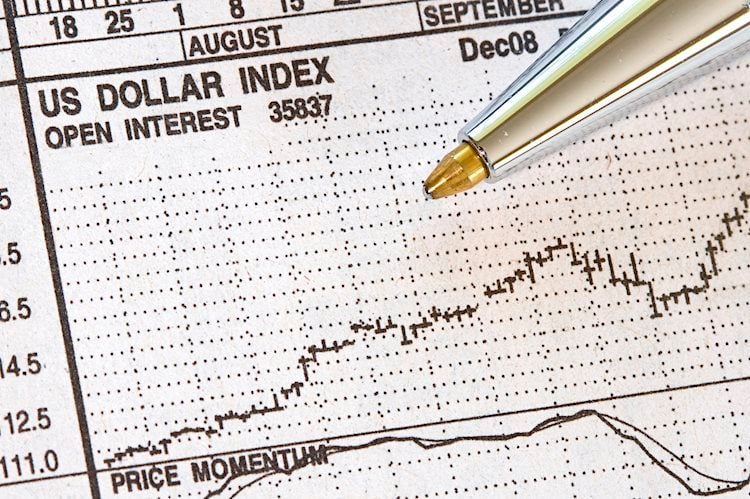
- The DXY Index is seen with losses around 103.15, after reaching a high of 103.70, above the 200-day SMA.
- Fed Chair Powell warned that the bank will hike again if needed, keeping its data-dependency approach.
- The US ISM Manufacturing PMI declined in November, as expected.
The US Dollar (USD) Index has shown a modest decline, trading at 103.15, despite Federal Reserve Chair Jerome Powell’s hawkish stance. The November ISM Manufacturing PMI came in lower than expected but didn’t trigger any significant downward movements in the Greenback. What seems to weaken the currency is that markets aren’t buying Powell’s hawkishness.
In line with that, despite cooling inflation and a mixed trend in the United States labour market, the Fed turned surprisingly less dovish, maintaining an open stance toward further policy tightening. While important gauges of inflation like the Consumer Price Index (CPI) and Personal Consumption Expenditures (PCE) have trended lower, the bank has declared that it needs to see more evidence of inflation cooling down, leaving the door open for further tightening if needed.
Daily Market Movers: US Dollar with mild losses despite Powell warning markets
- Chair Powell noted that in a speech at Spelman College on Friday that it is “premature” to say monetary policy is restrictive enough and that the bank will raise rates again if needed to lower inflation.
- On the data front, the ISM Manufacturing PMI reported by the Institute for Supply Management marked 46.7 for November, on par with the previous figure while falling short of the anticipated 47.6.
- Looking ahead, a few key events are scheduled with implications for the US Dollar and expectations on the Fed next week, including Retail Sales data for November on Thursday, followed by the November Nonfarm Payrolls report on Friday.
- US bond yields are experiencing a downward trend, with the 2-year, 5-year and 10-year yields standing at 4.57%, 4.16%, and 4.25%, respectively, and seem to limit the upside for the USD.
- According to the CME FedWatch Tool, market expectations for the December meeting indicate investors do not expect a rate hike. Additionally, swap markets are pricing in rate cuts midway through 2024.
Technical Analysis: US Dollar selling momentum persists, DXY capped by the 200-day SMA
The indicators on the daily chart paint a bearish picture of the US dollar. The Relative Strength Index (RSI) position underscores strong selling momentum, while the negative skew in the Moving Average Convergence Divergence (MACD) histogram further validates this downward pressure.
Bolstering the bearish case, the DXY position in relation to the Simple Moving Averages (SMAs) reinforces the downward trajectory. With the DXY remaining below the 20, 100 and 200-day SMAs, it’s apparent that buyers are facing an uphill battle against a prevailing bearish trend.
Support levels: 103.10, 103.00, 102.90.
Resistance levels: 103.60 (200-day SMA), 104.00, 104.20 (100-day SMA)
Inflation FAQs
Inflation measures the rise in the price of a representative basket of goods and services. Headline inflation is usually expressed as a percentage change on a month-on-month (MoM) and year-on-year (YoY) basis. Core inflation excludes more volatile elements such as food and fuel which can fluctuate because of geopolitical and seasonal factors. Core inflation is the figure economists focus on and is the level targeted by central banks, which are mandated to keep inflation at a manageable level, usually around 2%.
The Consumer Price Index (CPI) measures the change in prices of a basket of goods and services over a period of time. It is usually expressed as a percentage change on a month-on-month (MoM) and year-on-year (YoY) basis. Core CPI is the figure targeted by central banks as it excludes volatile food and fuel inputs. When Core CPI rises above 2% it usually results in higher interest rates and vice versa when it falls below 2%. Since higher interest rates are positive for a currency, higher inflation usually results in a stronger currency. The opposite is true when inflation falls.
Although it may seem counter-intuitive, high inflation in a country pushes up the value of its currency and vice versa for lower inflation. This is because the central bank will normally raise interest rates to combat the higher inflation, which attract more global capital inflows from investors looking for a lucrative place to park their money.
Formerly, Gold was the asset investors turned to in times of high inflation because it preserved its value, and whilst investors will often still buy Gold for its safe-haven properties in times of extreme market turmoil, this is not the case most of the time. This is because when inflation is high, central banks will put up interest rates to combat it.
Higher interest rates are negative for Gold because they increase the opportunity-cost of holding Gold vis-a-vis an interest-bearing asset or placing the money in a cash deposit account. On the flipside, lower inflation tends to be positive for Gold as it brings interest rates down, making the bright metal a more viable investment alternative.